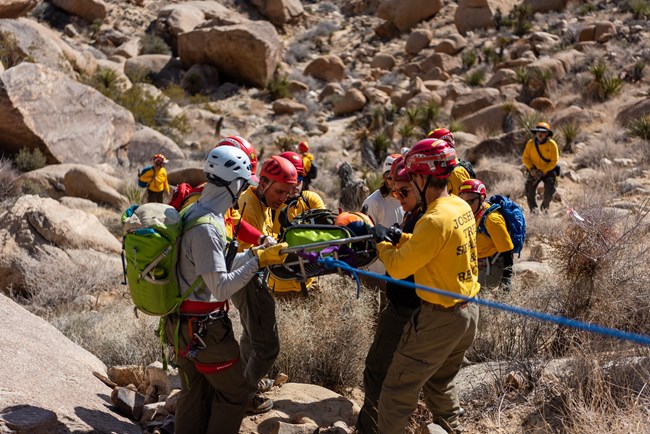
NPS/Bill Bjornstad Rock climbing has inherent risks and climbers assume complete responsibility for their safety. The National Park Service does not inspect, maintain, or repair fixed anchors and other climbing equipment. Climbers must have the appropriate skill and equipment for the route, conditions, weather, and season. A fixed anchor is defined as any piece of climbing equipment that is left in place to facilitate a safe ascent or rappel. Examples include, but are not limited to, bolts, pitons, and slings. Be PreparedJoshua Tree National Park is a maze of cliffs, canyons, washes, and boulders. The logistics of a rescue requires time to dispatch members and resources of the Joshua Tree Search and Rescue team. This can take several hours or even days. Do not expect a quick rescue. Be prepared with extra water, clothing, food, and a first-aid kit. EmergenciesIn an emergency, call 911. Be prepared to report the nature of the injuries, the nearest landmark, and the name of the rock formation and climbing route. Cell phone service is unreliable in most of the park. There is an emergency phone attached to the bathroom in the Intersection Rock parking area next to Hidden Valley Campground. A second emergency phone is located at the ranger station at Indian Cove. Assistance is available at entrance stations and visitor centers, when they are open. Tips to Stay Safe while Climbing
**The National Park Service does not inspect, maintain, or repair fixed anchors and other climbing equipment.
|
Last updated: May 6, 2024
